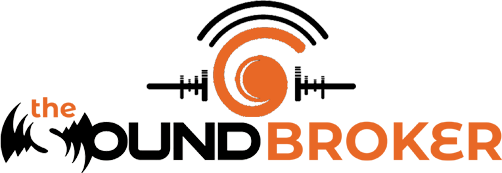Crosswords are a cherished pastime for millions of puzzle lovers, and the New York Times Crossword holds a special place as the gold standard. Each clue is more than just a word game—it’s a mix of logic, wit, and cultural reference. One clue that has captured attention recently is “Bumped Things” in the NYT Crossword. While it might look straightforward, it actually requires careful thought and an understanding of crossword clue styles.
In this guide, we’ll explore the meaning of “Bumped Things,” possible answers, solving strategies, and why such clues reflect the evolving art of crossword puzzle-making.
Bumped Things NYT Crossword: The Meaning Behind the Clue
When the New York Times Crossword uses a clue like “Bumped Things,” it doesn’t simply refer to objects one might physically bump into. Crossword setters often use figurative or double meanings.
The clue could refer to:
-
Physical collisions (like elbows, knees, or hips).
-
Schedule delays (events, flights, or appointments that get “bumped”).
-
Music or slang references (something that “bumps” in pop culture).
This layered approach is why solvers sometimes find themselves second-guessing. The phrase is broad enough to allow multiple possibilities, but the grid length and crossing letters help narrow it down.
Bumped Things NYT Crossword: Common Answers
Over time, certain answers have emerged for clues like “Bumped Things.” Examples include:
-
Elbows – since people often bump elbows as a casual greeting or by accident.
-
Heads – a universal phrase, “bumped heads,” meaning to collide or to disagree.
-
Flights – as in airline passengers being “bumped” from a plane.
-
Events – for schedule changes when something is bumped to a later date.
Which answer is correct depends entirely on the puzzle’s construction, word count, and context.
Bumped Things NYT Crossword: Why It Challenges Solvers
The NYT Crossword thrives on ambiguity. “Bumped Things” works well because:
-
It’s vague but familiar – everyone understands “bumped,” but interpretations differ.
-
It forces lateral thinking – solvers must decide if the clue is literal or metaphorical.
-
It rewards crossword culture knowledge – frequent solvers recognize repeated patterns.
This balance of simplicity and trickiness makes the clue memorable.
Bumped Things NYT Crossword in Crossword Culture
Clues like “Bumped Things” highlight how the New York Times Crossword evolves with language. While older puzzles leaned heavily on straightforward dictionary definitions, modern constructors embrace wordplay, idioms, and even pop culture.
“Bumped Things” taps into everyday expressions—whether you’ve bumped your head on a low ceiling, had your elbow nudged at a crowded table, or been bumped from an overbooked flight. That relatability is what makes it fun.
Solving Strategies for Bumped Things NYT Crossword
When encountering a clue like this, seasoned solvers apply several strategies:
-
Check word length – Is the answer five letters (heads), six (elbows), or longer?
-
Look at crossings – Intersecting answers reveal letters that limit possibilities.
-
Consider figurative meaning – Could it be about delays instead of collisions?
-
Think of plural forms – The word “Things” signals more than one, so answers are usually plural.
-
Recall recurring answers – Some words like “elbows” or “heads” appear frequently across puzzles.
By combining these methods, solvers reduce guesswork and lean on pattern recognition.
Bumped Things NYT Crossword: Examples from Past Puzzles
Looking back at archived puzzles, “Bumped Things” or similar clues have had different answers depending on context:
-
A Wednesday puzzle might use Elbows because it’s playful but accessible.
-
A Sunday puzzle might lean on Flights for a more figurative approach.
-
A Saturday puzzle could stretch into trickier territory like Events or Plans.
This demonstrates the fluid nature of crossword clueing—the same phrase can lead to entirely different solutions.
Why Bumped Things NYT Crossword Matters for Word Lovers
Clues like “Bumped Things” reveal why the NYT Crossword is beloved:
-
They make solvers pause and think deeply about language.
-
They show the richness of English idioms.
-
They bridge literal and figurative meanings.
For crossword enthusiasts, solving such a clue provides not just the joy of “getting it,” but also the satisfaction of engaging with language at a creative level.
Bumped Things NYT Crossword and Broader Wordplay
The clue also connects with a broader tradition of wordplay. Writers, poets, and comedians have long used the idea of “bumping” metaphorically. For instance:
-
“Bumping heads” represents conflict.
-
“Bumped up” can mean promoted.
-
“Bumping music” describes powerful beats.
Crossword puzzles borrow from this cultural reservoir, keeping the clues fresh and layered.
Lessons from the Bumped Things NYT Crossword
From a solver’s perspective, “Bumped Things” teaches a few key lessons:
-
Stay flexible with meanings – Don’t assume physical collisions are the only option.
-
Pay attention to grammar – The plural “Things” guides the answer’s structure.
-
Learn recurring themes – Puzzles often recycle clue types.
-
Enjoy the ambiguity – It’s not about rushing but savoring the wordplay.
Conclusion: Bumped Things NYT Crossword as a Puzzle Classic
The Bumped Things NYT Crossword clue is a perfect example of why the New York Times Crossword remains iconic. Simple on the surface, layered underneath, and deeply tied to culture, it challenges solvers to think differently.
Whether the answer is elbows, heads, flights, or something else, the real joy is in the solving process. “Bumped Things” reminds us that crosswords aren’t just puzzles—they’re explorations of how language connects to life.

